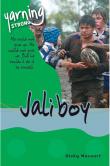AustLit
Latest Issues
AbstractHistoryArchive Description
'Being sent to boarding school in the city is harder than Jali could ever have imagined. But what no one yet knows, even Jali, is that this boy is a warrior at heart.' (Source: Publishers website)
Publication Details of Only Known VersionEarliest 2 Known Versions of
Works about this Work
-
Serious Issues for Young Readers
BlackWords : Serious Issues for Young Readers
2015
single work
criticism
— Appears in: The BlackWords Essays 2015; (p. 8) The BlackWords Essays 2019;In this essay Heiss discusses Indigenous-authored works that are targeted for upper-primary and young adult readers, that address issues of identity, self esteem, relationships and peer-group pressure that are available for both educators and students. Heiss recommends that these works discussed in this essay, will not only engage young Indigenous students, but also non-Indigenous students and other readers with a sense of sameness in terms of coming of age, facing friendships, and the growing pains that all teenagers face.
-
Serious Issues for Young Readers
BlackWords : Serious Issues for Young Readers
2015
single work
criticism
— Appears in: The BlackWords Essays 2015; (p. 8) The BlackWords Essays 2019;In this essay Heiss discusses Indigenous-authored works that are targeted for upper-primary and young adult readers, that address issues of identity, self esteem, relationships and peer-group pressure that are available for both educators and students. Heiss recommends that these works discussed in this essay, will not only engage young Indigenous students, but also non-Indigenous students and other readers with a sense of sameness in terms of coming of age, facing friendships, and the growing pains that all teenagers face.




